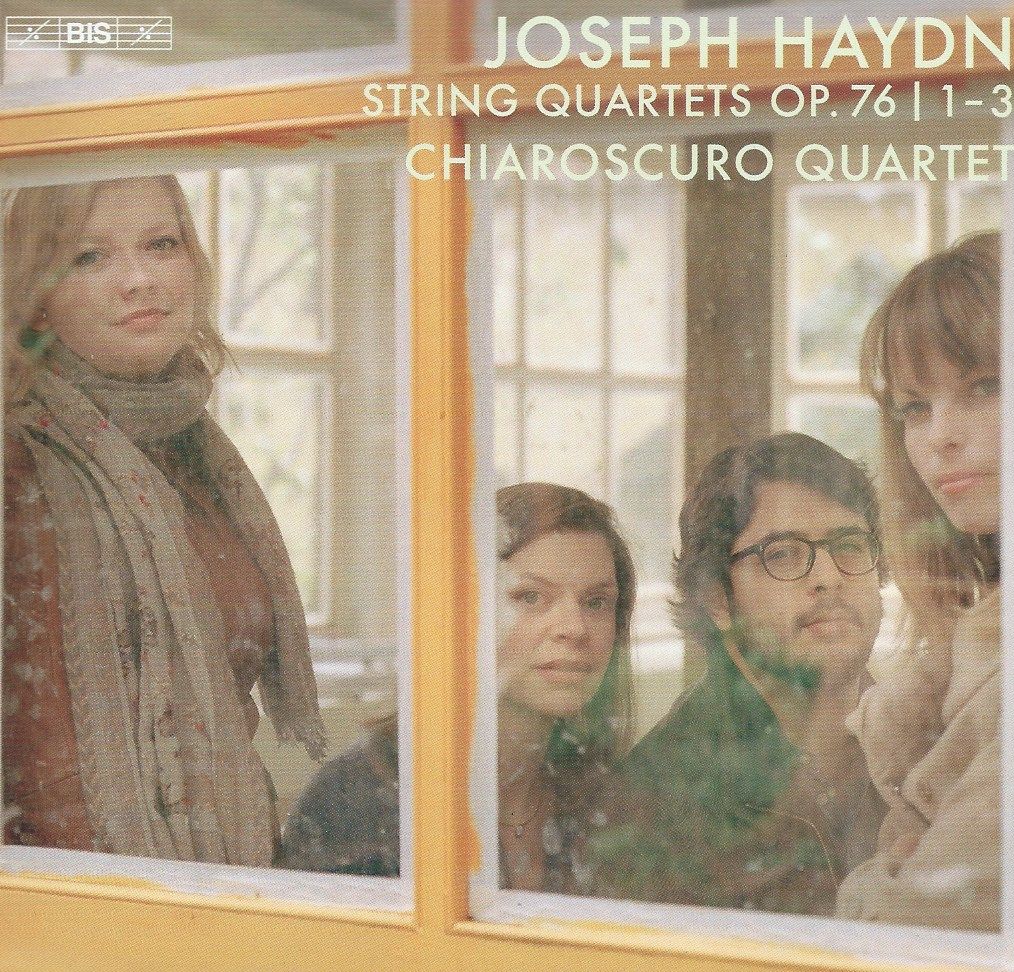The Sheer Joy of the Chiaroscuro Quartet's Haydn

A reminder of the magnificence of Haydn Quartets here: music of joy and solace in unquiet times. The Chiaroscuro Quartet is an international group, comprising Alina Ibragimatova (Russia) and Pablo Hernán Benedi (Spain) on violins, Emilie Hörnlund (Sweden) on viola and Claire Thirion (France) on cello.
The state-of-the-art SACD sound captures the sound of the quartet perfectly (and nice to see BIS' eco-packaging, too). Period performance, too, is part of the Chiaroscuro's ethos, using gut strings, period bow sand spikeless cello. Watching this documentary about their previous recording of the Op. 20 set gives a good idea how the group works:
And to get a full idea of their sound, here's a complete concert from London's Wigmore Hall: Beethoven's String Quartet in C minor, Op. 18/4 and Schubert's "Death and the Maiden" Quartet, D810:
For the release today we have the first three of Haydn's Op. 76 Quartets. Composed in 1796 and 1797, there are two "famous" quartets here, the so-called "Fifths," Op. 76/2 and the even more renowned "Emperor," Op. 76/3. So, in keeping with the nature of the blog, let's start with the orphan, the one without a nickname, the G major, Op. 76/1.
After an annunciatory set of three chords, Haydn plays with us - not like him, surely - teasing us with counterpoint that could easily lead to a fugue. But no - the sheer joy of intertwining lines at will suffices in a movement full of life and that mixes the learned with a second subject that, as Haydn expert Richard Wigmore points out in his model booklet notes, could easily be a Viennese street tune (one thinks also of the decidedly rustic, almost thigh-slapping Trio of the third movement, featuring Ibragimatova on solo violin). Any notions of "authentic" performances equalling out of tune performances should be jettisoned - while ther eis one star name in the line-up (Ibragimova), this is every inch the group effort. The finale contains its own sleights-of-hand, and at least one moment of pure, unalloyed magic.
The D Minor Quartet Op. 76/2 is so-called because of the nature of the opening phrase. Intense and concentrated, this is Haydn with a furrowed brow, with the s erenade-like Andante a più tosto Allegretto taking us more to the world of the Divertimento and thence, in the finale, to the Hungarian gypsies.
With the C major, Op. 76/3, we come to the best known of the three, thanks to its slow movement, a set of variations on Haydn's own Kaiserlied. It becomes all the fresher after the intense thematic workings of the first movement (a movement that contains a rustic outburst given in all its glory here). You will know the tune, without doubt:
The recording is overseen by the hyper-keen ears of Andrew Keener (I've sat in on a number of his recording sessions elsewhere and can personally attest to his thoroughness); a change from the Op. 20's in-house BIS preducer, Ingo Petry, although both were recorded in Bremen's Sendesaal.
Given that the Chiaroscueo Quartet's website lists this as the Op. 76 Quartets, Volume 1, we can be sure that Nos. 4-6 are en route. For convenience, there are links below also to the two discs on BIS of the Haydn Op. 20, "Sun" Quartets also; plus Spotify links to sample.
